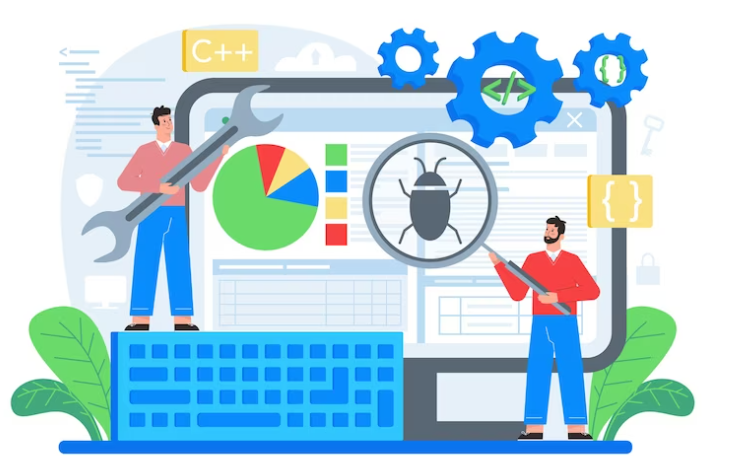AUTHOR: MICKEY JORDAN
DATE: 29/02/2024
In recent years, the landscape of software development in India has witnessed unprecedented growth. As technology becomes an integral part of various industries, the prevalence of high-risk software platforms has become a pressing concern. This article delves into the nuances of software platforms in India, examining their implications, regulatory measures, and potential mitigation strategies.
Introduction
Definition of High-Risk Software Platforms
High-risk software platforms, applications, and systems that pose a significant threat to the security and stability of digital environments. These platforms often exhibit vulnerabilities that can be exploited by malicious actors, leading to potential data breaches, service interruptions, and other cybersecurity risks.
Significance in India
With the surge in digital transformation initiatives across sectors in India, the reliance on software solutions has reached new heights. From financial institutions to providers, high-risk software platforms can have far-reaching consequences, making it crucial to address these challenges head-on.
Emerging Trends in Software Development

Rapid Technological Advancements
The fast-paced evolution of technology has the ability for security measures to keep up. As software development accelerates, the risk of security aspects increases, making it imperative to reassess and fortify existing systems.
Increased Dependency on Software Solutions
Organizations in India are increasingly dependent on software solutions to enhance operations, enhance efficiency, and stay competitive. This heightened dependency, while beneficial, opens avenues for necessitating a comprehensive approach to software security.
High-Risk Software Platforms Explained
Identifying High-Risk Elements
High-risk software[1] elements can range from coding vulnerabilities to inadequate encryption protocols. Understanding these elements is essential for developers and users alike to make informed decisions regarding software usage.
Common Vulnerabilities
Some of the most prevalent vulnerabilities in software[2] platforms include data encryption, insecure application programming interfaces (APIs), and lax authentication protocols. Addressing these vulnerabilities is critical to mitigating potential risks.
Regulatory Framework in India

Government Policies and Guidelines
Recognizing the gravity of the situation, the Indian government has implemented policies and guidelines to regulate the development and usage of software. These measures aim to establish a secure digital ecosystem and hold developers accountable for the security of their products.
Cybersecurity Measures
Collaborating with cybersecurity experts, the Indian government has instituted measures to bolster the country’s cybersecurity defenses. Initiatives include the establishment of cybersecurity centers and the promotion of awareness among businesses and individuals.
Case Studies
Noteworthy Incidents Involving High-Risk Software
Several high-profile incidents in India have underscored the risks associated[3] with vulnerable software platforms. Examining these case studies provides insights into the potential consequences and reinforces the importance of proactive security measures.
Impact on Businesses and Users
Businesses that have fallen victim to high-risk software incidents often face financial losses, reputational damage, and legal repercussions. Users, too, bear the brunt of compromised personal information and disrupted services, emphasizing the need for robust security measures.
Mitigation Strategies
Implementing secure coding practices, conducting regular security audits, and fostering a security-first mindset among developers are crucial steps in mitigating the risks associated with high-risk software platforms. Regular audits and timely software updates play a pivotal role in addressing emerging vulnerabilities. Proactive measures, coupled with user education, contribute to creating a more secure software environment[4].
Industry Collaboration for Risk Mitigation
Collaboration among industry players, sharing threat intelligence, and a collective approach to cybersecurity contribute to a stronger defense against software threats. Industry forums, associations, and initiatives bring people together to address challenges and share best practices. This collaborative effort aims to create a safer digital landscape for businesses and users.

Challenges Faced by Software Developers
Balancing Innovation and Security
Developers often face the challenge of the need for innovation in creating secure software. Striking this delicate balance is essential for driving technological progress without compromising security.
Addressing User Privacy Concerns
In an era of awareness about data privacy, software developers[5] must address user concerns by prioritizing robust privacy measures. Transparent data handling practices and user-friendly privacy controls are key considerations.
Future Outlook
Anticipated Developments in Software Security
As technology continues to evolve, the future holds promising developments in software security. Advancements in artificial intelligence, machine learning, and proactive cybersecurity measures are expected to reshape the landscape of software platforms.
Evolution of High-Risk Software Platforms
The ongoing evolution of software platforms necessitates a continuous adaptation of security strategies. Developers must remain proactive about emerging threats to stay ahead of potential risks.
Conclusion
In conclusion, the prevalence of high-risk software platforms in India demands a multifaceted approach to address the associated challenges. From regulatory measures and collaborative efforts to individual responsibilities, creating a secure digital environment requires collective commitment. As we navigate the evolving landscape of technology, staying informed and proactive is paramount to safeguarding businesses and users alike.
FAQs
- How can businesses identify high-risk software platforms before integration?
- Businesses can conduct thorough security assessments, engage with cybersecurity experts, and prioritize solutions with a proven track record of robust security.
- What role does user education play in mitigating the risks associated with software vulnerabilities?
- User education is critical to creating a vigilant user base that recognizes potential threats, practices secure online behaviors, and understands the importance of regular software updates.
- Are there industry-specific challenges in addressing high-risk software platforms in India?
- Yes, different industries may face unique challenges. For example, the financial sector may have specific compliance requirements, while healthcare may prioritize the confidentiality of patient data.
- How can developers balance the need for innovation with the imperative to create secure software?
- Developers can adopt a security-first mindset, integrate security measures into the development life cycle, and stay updated on emerging threats and best practices.
- What steps can individuals take to protect themselves from the potential risks associated with high-risk software platforms?
- Individuals should practice good cybersecurity hygiene, use reputable software, keep software and devices updated, and be cautious about sharing personal information online.

